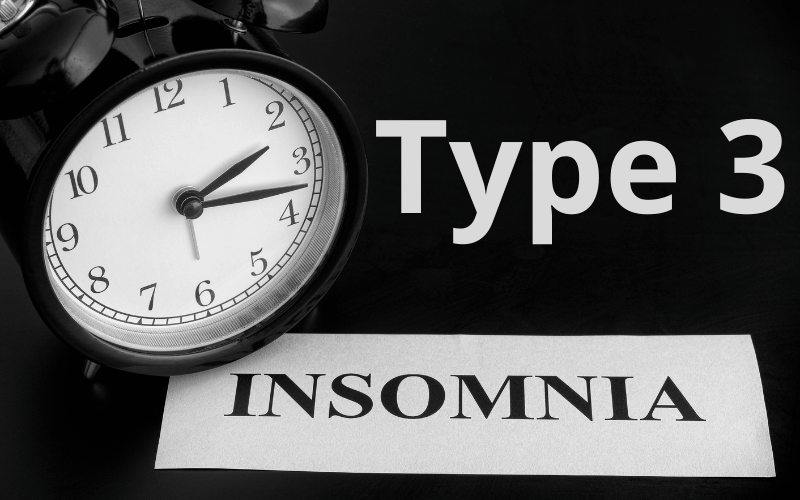Type 3: Chronic Insomnia – The Unending Nightly Battle

Chronic insomnia stands as the colossus among sleep disorders, towering over its counterparts in both duration and complexity. While other insomnias might be likened to temporary storms or passing showers, chronic insomnia is an unyielding monsoon season, drenching one’s nights in wakefulness and the days in fatigue.
A striking aspect of chronic insomnia is its dual nature. On one hand, there’s primary chronic insomnia, a condition that feels almost enigmatic. Without any apparent medical conditions to pin it on, it emerges, leaving both patients and doctors puzzled. Some theorize it’s rooted in deep physiological imbalances or even genetic predispositions. This version requires keen observation, nuanced understanding, and often, an exploration into unconventional treatments.
Contrastingly, secondary chronic insomnia wears its causes on its sleeve. Whether it’s the aftermath of a respiratory disorder, the side effect of a medication, or the mental whirlwinds of anxiety and depression, this type signals an underlying issue. Addressing the primary ailment often paves the path to restoring sleep.
In this digital age, our lifestyles inadvertently fan the flames of chronic insomnia. The blue light from screens, known to suppress melatonin, is omnipresent. Many fall into the trap of late-night binge-watching or endless scrolling, pushing sleep further away. Then there’s the culture of burning the midnight oil, hailed in many professional circles, which plays havoc with the body’s circadian rhythms.
Often overlooked is the intricate relationship between one’s diet and sleep. Caffeine and sugar, staples in many diets, are notorious for their sleep-disrupting abilities. On the other hand, a deficiency in essential nutrients, like magnesium, can also play a role in sleep disturbances. A well-balanced diet, rich in sleep-promoting foods, can often be a game-changer for those grappling with chronic insomnia. (3)